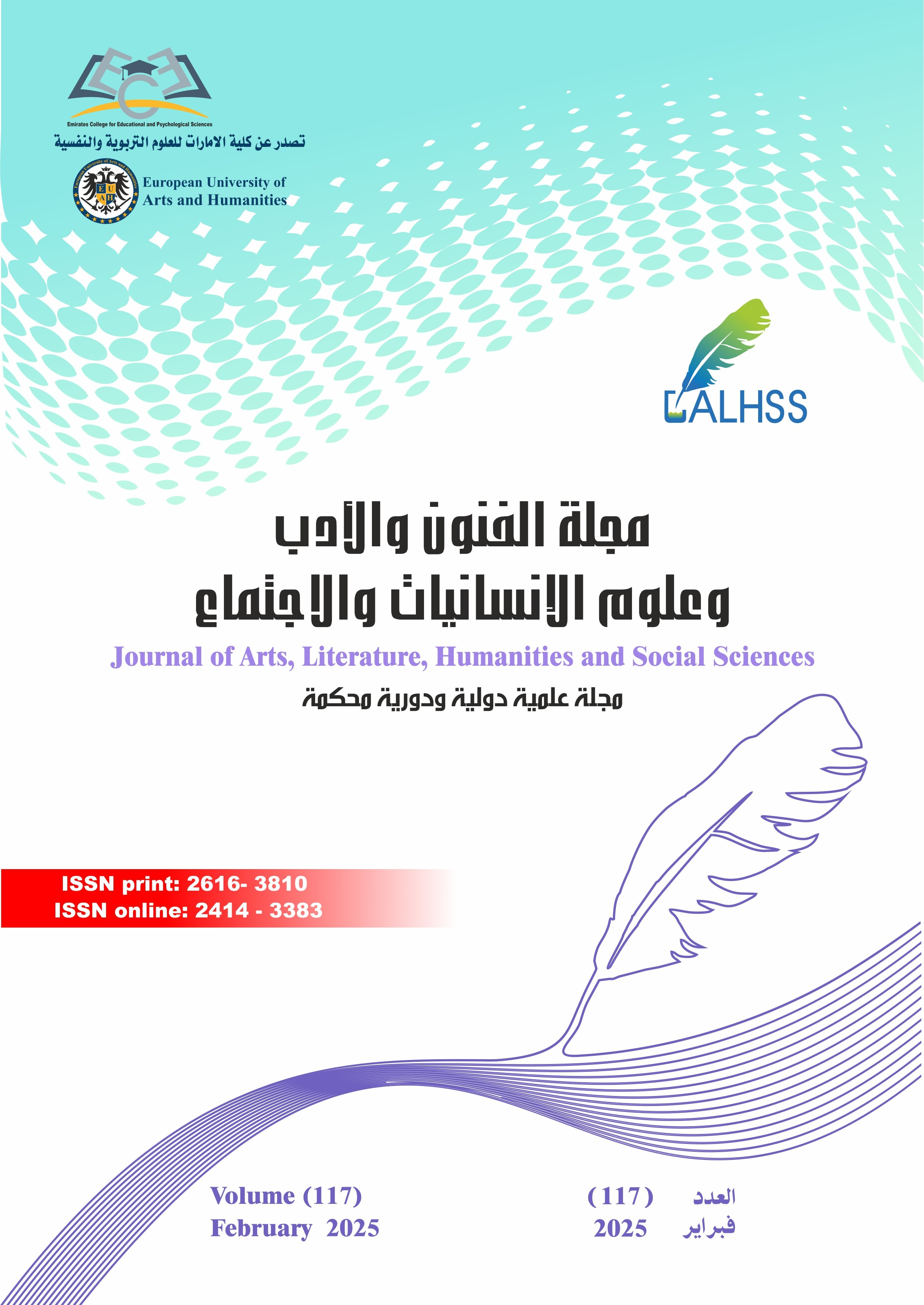The Gates of the Two Holy Mosques in the Saudi era as an Artistic starting point for creating Enamel Metal Crafts
Abstract
The study aimed to present an approach to metal enameling inspired by the doors of the two holy mosques during the Saudi era, and to create a metal enamel piece based on the aesthetic units found in the doors of the two holy mosques during the Saudi era. The study relied on personal experience in presenting experimental practices using cold enameling, with a total of 11 practices, and self-applications using cold enameling, with 10 total applications. The study followed a descriptive-analytical method in the theoretical framework and an experimental method in the practical framework. The statistical methods indicated that 94.27% of the total jury members strongly agreed on methods to benefit from the doors of the two holy mosques in the Saudi era as a basis for metal enameling, and 93.98% of the total jury members strongly agreed that these applications could be used to create a metal enamel piece. The main findings showed that the doors varied between single or multiple leaves, depending on the architectural need. In the two holy mosques, gilded copper and excellent wood were used, along with advanced techniques to ensure durability and beauty. The multiple doors in the two holy mosques aim to facilitate the entry and exit of worshipers and reduce congestion, especially during peak times. The design evolution reflects the response to the increasing number of visitors. This multiplicity enhances the distribution of the surrounding population density and provides easy access from all directions. The variety of names and locations of the doors carries symbolic and religious connotations that reinforce the sanctity and historical significance of the place. The researcher recommends focusing on the aesthetics and architectural concepts of the two holy mosques and the diversity of their doors as an Islamic cultural heritage, intensifying research into the aesthetics of the two holy mosques, with a special focus on the doors, to enhance creativity and innovation in various fields of art. It also suggests using metal enameling techniques and integrating them to boost creativity and innovation.
References
1. نظيف، عبدالسلام. (1989). دراسات في العمارة الإسلامية. الهيئة العشرية العامة للكتب.
2. الحسيني، قاسم. (2016). المنظومة الزخرفية في الفنون الإسلامية دراسة مفهوم الصيرورة. ط1. دار الرضوان. عمان.
3. علي، محمد – حسن، محمد – فراج، كرم – عبدالحميد، سحر، (2022)، المينا كمعالجة تشكيلية في ضوء أعمال بابلو بيكاسو لعمل مشغولة معدنية مبتكرة، مجلة حوار جنوب
4. عدلي و شرف، داليا، (2024) : القيم الجمالية والابعاد التشكيلية في مختارات من التحف المعدنية الفاطمية لتنمية التذوق الفني واستحداث مشغولات معدنية معاصرة، جامعة الإسكندرية، مجلة العمارة والفنون والعلوم الإنسانية.
5. الحزمي، أحمد. (2014). "الزخرفة الإسلامية - دراسة مقارنة الحرم المكي والمسجد النبوي لإبراز عناصر الزخرفة الإسلامية في العمارة المعاصرة". مجلة العلوم والتكنولوجيا. المجلد(19). (2).
6. محمد بكري يحيى – بدون تاريخ: فن المينا" المجلس الأعلى لرعاية الفنون والآداب والعلوم الاجتماعية.
7. خالد أبو المجد أحمد أدم (2007). "معرض منظر ومنشور ومحكم من قبل اللجنة العلمية للترقية لوظيفة أستاذ مساعد" رؤية تعبيرية بين التشخيص والتجريد بالمينا
8. Glenice Lesley Mathews 1984: Enamels. Enameling. Enamelists Published in Radnor, Pennsylvania, p.5.
Copyright (c) 2025 أ. عائشه بنت فهد بن منصور الصبحي , أ.د. خالد أبو المجد أحمد آدم

This work is licensed under a Creative Commons Attribution-ShareAlike 4.0 International License.



